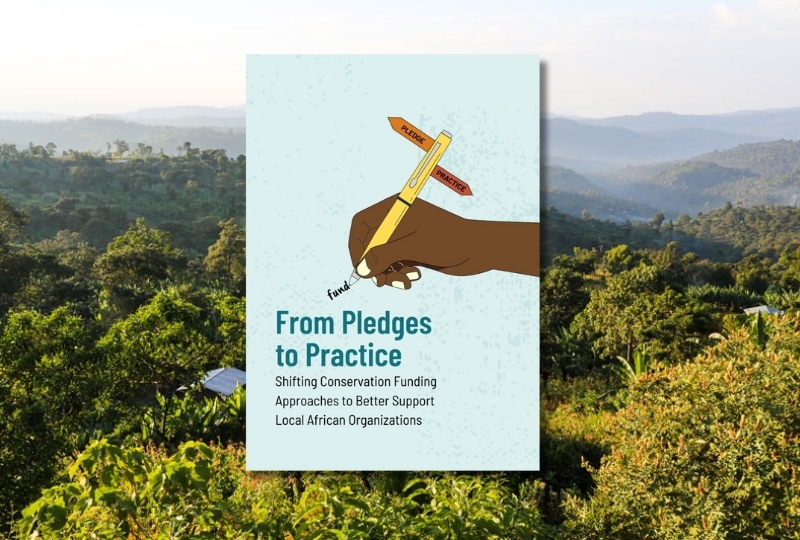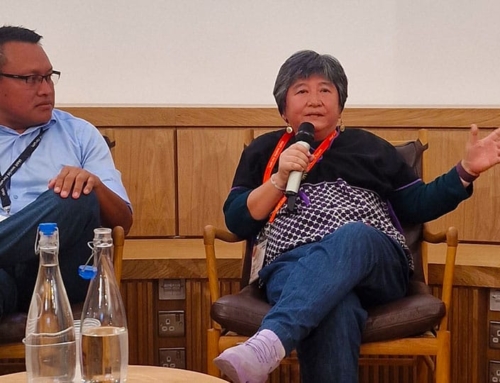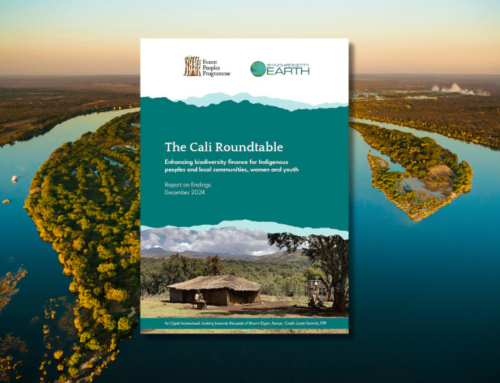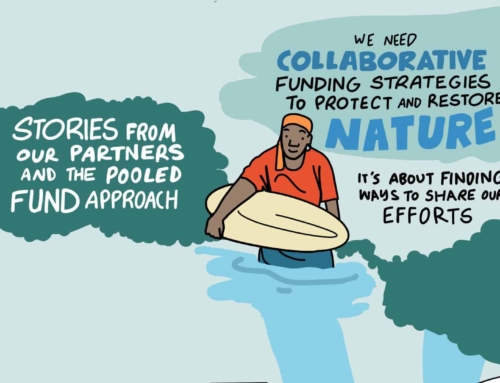It’s Time. This was the theme of New York Climate Week 2024. For us, as part of the Good Funding Hub, that means ‘It’s Time’… to change funding practices for the better.
During New York Climate Week, Maliasili and Synchronicity Earth launched a report ‘From Pledges to Practice: Shifting Conservation Funding Approaches to Better Support Local African Organizations’.
In 2021, governments and private funders at COP26 pledged US$1.7 billion for the Glasgow Climate Pact where there was a commitment to increase funding for forest tenure and fund via Indigenous Peoples and Local Communities. However, half of this has already been dispersed, and only 2.1% has gone directly to local organisations, networks, or funds.
The pledge itself represents progress; the global environmental movement is finally recognising the vital role played by Indigenous Peoples and local communities in sustaining biodiversity and ecosystems. However, the environmental philanthropy sector has been built on a system that favours the funders’ needs over that which the funding aims to serve. Not all funding is merely its economic value; to truly support the communities enacting conservation on the ground, funders need to improve their practices and recognise the importance of trust, aligned strategieis and relationships.
Pledges to Practice highlights what ‘early mover’ funders are trying to do better to get funding to local organisations, using specific examples to seed better funding practices more broadly. This is the second report produced as part of our joint endeavour to grow and learn and to push others to fund better. The first joint report was ‘Greening the Grassroots’ which highlighted the barriers and potential solutions for accessing funding and giving funding to local groups within Africa.

Maliasili and Synchronicity Earth co-authored ‘From Pledges to Practice’, a report launched during New York Climate Week 2024 at the Good Funding Hub. © The Christensen Fund
Learning from the ‘early movers’
The report draws on interviews with several organisations dubbed ‘early movers’: international funders who are trying to listen to local organisations and develop approaches that they hope will create more meaningful support. The case studies particularly focus on support for funding local organisations working in African conservation, but the key ‘asks’ from these partners are more widely applicable:
- More core funding (used for ‘overhead’ costs such as salaries, training, and headquarters), capacity-focused (developing the team’s expertise and networks), and unrestricted (moving away from project funding, enabling the organisation to steer) funding.
- More emphasis on investing in the organisational strategies and solutions they have developed in response to their local context and challenges, instead of using local organisations to implement external goals and agendas.
- Develop more trust between the funders and the partners, moving away from a simple transactional relationship.
The early movers featured in the report were selected as they have been taking on board this feedback, intentionally reflecting on their own approaches and improving them.
Committing to local-led approaches
The report identifies that traditional philanthropy often sees local organisations as a means to implementing goals and strategies envisioned abroad, rather than local experts and leaders who have their own strategies shaped by the regional context.
However, the early mover organisations show how this can change. The Christensen Fund is led by the belief that Indigenous and community rights must be established as the first step towards any sustainable conservation outcome.
“This strategy is at the heart of our thinking. If local people have rights, they can better manage their forests.”
Christensen Fund

Congo Basin Affiliates Merline Touko Tchoko (left) and Julie Gagoe Tchoko (right) speaking to community members on a site visit with our partner AMMCO. © AMMCO
Led by strategy, or by values?
Enabling local organisations to prioritise their strategies creates more space for unrestricted funding, free of the restraints of project-based funding, which is usually led by the funders’ strategy. So, should funders focus on becoming more values-led? What do these values look like for the early movers?
Good Energies holds ‘meaningful participation’ as an important guiding principle for its work. This means that inclusivity in decision-making plays a fundamental role in its relationships with local organisations.
“A guiding principle provides a way to track and monitor if you are actually fulfilling your guiding way of working. The starting point is that you need some kind of guiding principle.”
Good Energies
The relationship itself: partnership over transactions
When environmental philanthropy is transactional, funders use local organisations to carry out the agendas created overseas. This is built on unequal power dynamics which do not recognise the local expertise and leadership of these organisations- that they are not agencies to take on projects on a funders’ whim, but changemakers in their own right with their own strategies for change rooted in the local context.
However, the early movers have been actively improving their relationships with on-the-ground partners and considering how to flatten the power dynamics, prioritising the partners’ goals over their own in the spirit of true support.
Cartier for Nature hold deep conversations with their local partners to understand what they are trying to do, what their impact is, how they plan to scale up, and what they need to get there.
“This flips the model of engaging local groups as ‘hired guns’ to implement others’ visions and priorities. We try to design coalitions that put local groups at the centre and then bring others in.”
Bezos Earth Fund

Gemma Goodman, Head of Research and Development at Synchronicity Earth, speaking at the Good Funding Hub during New York Climate Week. © Isha Tickoo
Changing dynamics: ‘We won’t tell you how to spend the money’
92% of local African conservation organisations identify the lack of core and unrestricted funding as a major barrier. Offering this type of funding is a challenge for funders; they do not want to cede control and want to be able to track the impact of the funding, which is why project-focused funding is so common.
“Some partners would say that philanthropy can at times be a new form of colonialism and a way of controlling organisations and communities and movements. That is where the unrestricted funding comes into play. It is not ethical for local organisations to be working in service of funders.”
Christensen Fund
By investing the time in long-term relationships with partners, the risks of unrestricted funding can be minimised as trust and open communication keep both organisations getting what they need from each other.
True participatory leadership
In a recent interview with our Youth Affiliate Swetha Stotra Bhashyam, we featured the ‘Ladder of Youth Participation’, which shows how support for young people can move beyond models that encourage manipulation and tokenism to true participatory leadership.
This way of thinking can be used for funding Indigenous Peoples and local communities too. The Christensen Fund has brought Indigenous Peoples’ representatives from its partners onto its board. “When you talk about really putting grantees and Indigenous representatives at the highest level of decision-making, I don’t think there is really much else you can do. That was a really historic moment.”
Never stop listening and learning
Our hope is that this report will inform the evolution of the wider conservation funding ecosystem and provide specific guidance for other funders interested in making similar meaningful shifts.
At Synchronicity Earth, we are on a continuous journey of learning so that we can adapt our funding practice, led by feedback from our partners and from knowledge exchange with fellow funders and others with experience and insights to offer. It is key that we, as funders, continue to make time for intentional awareness and self-reflection so we can continue to adapt and grow.
Read the full report published by Maliasili and Synchronicity Earth ‘From Pledges to Practice: Shifting Conservation Funding Approaches to Better Support Local African Organizations’.
This report was authored by Brendan Buzzard. Maliasili and Synchronicity Earth would like to express our gratitude to all the individuals, organisations, and foundations who provided their valuable insights and experiences to contribute to this report.
For regular insights into how funders can develop their practice, sign up for our ‘Reimagining Philanthropy’ newsletter on LinkedIn.






